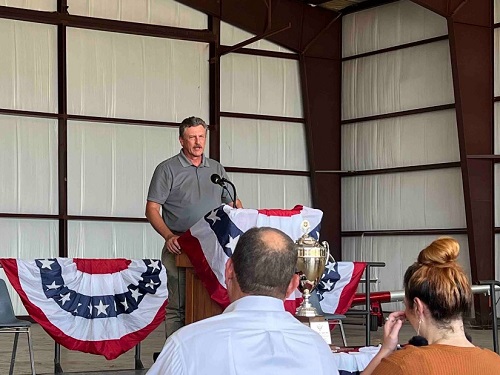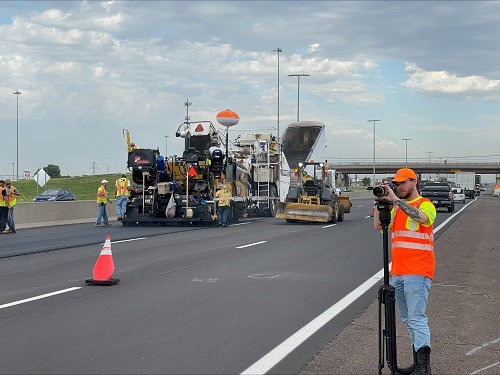More than $9 billion in proposed statewide surface transportation upgrades for the next eight years recently received the thumbs up from the Oklahoma Transportation Commission.
[Above photo by the Oklahoma DOT]
That funding covers two separate highway-focused improvement plans proposed by the Oklahoma Department of Transportation: Roughly $8.8 billion for the agency’s fiscal year 2024-2031 Construction Work Plan, along with $500 million for its FY 2024-2027 Asset Preservation Plan.
The Oklahoma DOT noted that those two plans will address the last structurally deficient bridges on the state’s highway system – 15 in all – that were not already under contract for rehabilitation or replacement.
The cost to upgrade 395 bridges at risk of becoming structurally deficient are also included within those two plans, with the Construction Work Plan covering improvements to 1,100 miles of two-lane highways statewide with deficient shoulders.

“Through the dedicated focus of [our] eight-year [construction work] plan, the department has been able to address critical highway infrastructure needs, especially on our bridges,” said Tim Gatz, secretary and executive director of the Oklahoma DOT, in a statement.
“We’re adjusting that focus in recent years to improve more of those rural two-lane highways that need shoulders,” he added. “This is will have a tremendous impact on safety in rural areas. Maintaining safe and effective routes on Oklahoma’s highway system is a critical part of the state’s economy that keeps us connected to the nation and the world.”
In total, the latest eight-year work plan encompasses 1,738 individual projects, with the asset preservation plan including another 290 projects.
The Oklahoma state legislature has also committed $200 million in a one-time allocation to the Rural Economic Transportation Reliability and Optimization or RETRO fund provisions. That money should help accelerate construction, repair, and maintenance of Construction Work Plan projects in qualifying rural areas, the agency noted.
“The legislature must be commended for supporting the needs of Oklahoma’s transportation network with the $200 million allocation of RETRO Funds,” Gatz said.
“The RETRO funding that has been provided this year has been an absolute difference-maker and where at one-time we had envisioned it would help us advance some projects, and we did advance some, but it kept some very critical projects on the path to construction in an inflationary environment that was challenging for us to manage,” he noted.
Gatz added that investments in Oklahoma’s surface transportation system since the approval of its first eight-year Construction Work Plan in 2003 have made “significant impacts to the quality and level of service” of the state’s highway infrastructure.
According to the agency, Oklahoma had 1,168 structurally deficient bridges on the highway system 20 years ago – making the state among the worst nationally for bridge conditions.
By 2022, however, Oklahoma ranked among the best nation – number five, to be exact – thanks to strategic planning with the Construction Work Plan and continued commitments from legislators, governors, and state DOT officials over the past two decades.
The agency noted that federal grants helped offset increased estimates due to inflation and rising materials costs on some projects in the latest plan updates.
That included an $85 million “Mega” grant for the I-44 and US-75 interchange in Tulsa and a $45 million Transportation Infrastructure Finance and Innovation Act or TIFIA loan for 29 miles of improvements to rural two-lane highways with deficient shoulders.
 States
States


